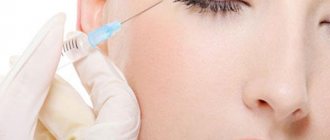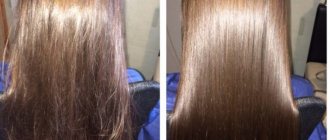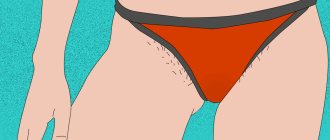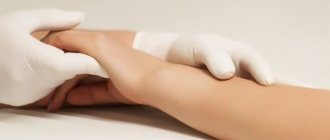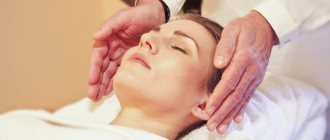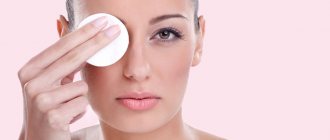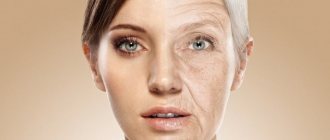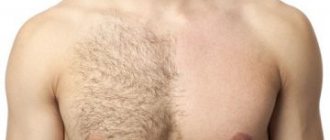General information
Ingrown hairs appear due to a change in their growth, when the shaft remains under the skin without breaking through the skin, and its growth occurs in the opposite direction. As a rule, this phenomenon, which is also called pseudofolliculitis , develops in those places where a person often removes unwanted hair.
Most often, this is observed on the face, legs, pubic area, and armpit area. In places where pseudofolliculitis develops, swelling and redness appear, and the skin may itch. Later, scars and pigmentation may remain in these places. Therefore, although such a disease is not dangerous, it can be quite unpleasant and cause significant discomfort. Very often, this phenomenon is observed in people of the Negroid race, as well as in those whose hair is very coarse. If such a problem is observed in certain areas of the skin, a person needs to reconsider the methods of dealing with unwanted hair and prefer professional hair removal methods.
How to overcome this problem and what to do if a person develops pseudofolliculitis will be discussed in this article.
Causes of ingrown hairs after hair removal, sugaring, shaving
In addition to physiological factors and lack of proper care, the removal procedure itself, if carried out incorrectly, can result in unpleasant consequences.
Depilation should be performed strictly in the direction of growth. The razor is handled carefully, without pressure, using foam, cream or shaving lotion to glide.
Attention! Under no circumstances should you use shower gel or regular soap. They will not give the desired effect and can lead to microtrauma.
The tool must be individual, with a sharp blade. After each use on the skin, it must be washed. The session should be completed by treating the hands first with an antiseptic, and then the places where depilation was performed, then it is recommended to apply a soothing agent that slows down hair growth.
Epilation with wax or an epilator, like sugaring, are equally dangerous: if the hair is captured incorrectly, then only part of it protruding to the surface is pulled out, and the canal and mouth are injured. After this, the follicle becomes inflamed and ingrowth begins: the new hair grows horizontally, in a spiral, or curls up into a knot under the skin.
Epilation is carried out on dry skin, pre-cooled. The strips are attached in the direction of growth and removed against one sharp and quick movement. The skin is treated with a disinfectant and additionally with a cream or lotion that slows down the rate of growth of vegetation. To prevent ingrowth, you should use an antiseptic every day and additionally use an ointment with antibiotic properties.
Pathogenesis
The development of pseudofolliculitis is due to the fact that the growth of follicle hairs is prevented by the skin or epithelium. As a result, the hair does not grow straight, but begins to grow into the surrounding skin. This provokes an inflammatory reaction, redness and irritation of the skin. of microabscesses , as well as infiltrate , which appears as a reaction to a foreign body, may occur Sometimes psefdofolliculitis leads to fibrosis of the dermis, which leads to the appearance of papules, pustules, and hyperpigmentation. Sometimes, after an advanced ingrowth is removed, scars remain on the skin.
What you should never do
Fighting at home is quite a risky business. If the wrong means are used or an error is made during the procedure, it is easy to cause infection in the internal tissues. In addition, there is a certain danger if no measures are taken and irritation is left unattended.
However, even good intentions can lead to the development of infection. Under no circumstances should you pick at the inflamed area or try to squeeze out hair. This can only disturb the wound, enlarge it and seriously injure the epidermis. After squeezing, a scar and scar may well appear.
When using scrubbing or peeling products, do not forget about moisturizing. Without it, the skin will dry out and the next depilation procedure will cause severe irritation. Also, too frequent scrubbing can cause thickening of the epidermis: cells can begin to divide too intensively and block the follicle channels.
In no case should you open abscesses with pus yourself, even when using ointments and compresses to draw out dead blood cells. The risk of infection is too great. Also, if papules—red, hard bumps—appear, you should not squeeze them out. As with acne on the face, excess pressure can injure the skin, increase inflammation and the area where it spreads. Squeezing also leads to the formation of scars and scars.
Attention! If none of the methods work, you should consult a dermatologist for professional help.
Classification
Depending on the characteristics of development, the following varieties are distinguished:
- Pseudofolliculitis with hairs ingrown close to the surface of the skin.
- Pseudofolliculitis with deep hair growth.
Depending on the manifestations, there are:
- Ingrown hair in the form of an abscess.
- In the form of swelling with redness.
Depending on location:
- On the face
- On the neck.
- On foot.
- In the pubic area.
- In the armpit area.
- On the back (in infants).
Why do superficial ingrown hairs appear?
This is the second form of this dermatological defect, which, as mentioned earlier, is called the “pantyhose effect.” Despite the fact that the hair has overcome its entire growth path and begins to grow to the surface, it encounters the stratum corneum of the epidermis. The latter are dead cells, which, in a normal and healthy skin condition, shed naturally and are practically not observed on the skin.
Otherwise, the stratum corneum thickens, which prevents the hair from growing, seemingly at this final stage. Ultimately, under the horny cell, the hair begins to curl into a ring or spiral.
Ring-shaped hairs can be very often observed on the back of the thighs. Their formation is stimulated by frequent and as close contact of the thighs as possible with a chair, sofa, etc. And this is a natural process of thickening the stratum corneum. This type of superficial hair is typical for dry, thin skin.
Causes
In most cases, the cause of ingrown hairs is depilation performed at home. When using a razor, creams, wax or epilator, only that part of the hair that is visible above the skin is removed. But the bulbs remain unharmed. Each time, after another depilation, the hair becomes weaker. At the same time, the stratum corneum of the epidermis closes the openings of the hair follicles. As a result, the hair cannot break through and grows into the skin.
The frequency of such manifestations is influenced by the following factors:
- Improper conduct of the depilation process - shaving against growth, using dull machines, too frequent depilation, etc.
- Lack of skin preparation for depilation and care after this procedure.
- Features of the skin – dryness, too thick layer of epidermis.
- Hair hardness, depth of hair follicles.
- Genetic disposition.
- Hormonal disorders - increased estrogen during a certain period of the monthly cycle, endocrine disorders, etc.
Ingrown hairs in the bikini area can appear due to regular wearing of not very comfortable underwear. If you regularly depilate your pubic region, the prerequisites for ingrown hairs appear. When wearing underwear made of synthetic materials, moisture does not evaporate from the surface of the skin, and as a result, bacterial infections can develop. As a result, you will notice that the ingrown hair in the bikini area has become a lump. As a rule, ingrown hairs become a lump when infectious processes develop. That is why after depilation you should not wear underwear made from non-natural materials.
Laser hair removal
How to get rid of ingrown hairs, what to do if hairs grow ingrown? These questions have always worried and continue to worry the fair sex. The problem of ingrown hairs is now more relevant than ever. There are a great variety of methods for getting rid of unwanted hair on the skin, but most of them cause discomfort, pain, and provoke the appearance of ingrown hairs.
The laser affects the skin inside, specifically the hair follicle, this provokes its destruction and the hair stops growing. This is a quick and painless technique that has now found many fans.
It is best to leave the problem of ingrown hairs to a specialist, so you can avoid infection, infection and other unpleasant consequences.
Symptoms
Hair can periodically grow in any place where unwanted hairs are periodically removed by some means. Most often, this phenomenon is observed on the legs, armpits, pubic area, neck and cheeks in men.
The main early signs of ingrown hair are the development of swelling and hyperemia. After some time, the development of the inflammatory process is noted. papules appear at the sites of ingrowth , which hurt and itch. In some cases, the tip of the hair may be visible through the skin. However, if a person tries to pull it out on their own with tweezers or another instrument, then an infection may end up getting inside the follicle. This leads to the formation of microabscesses. When the inflammatory process subsides, scars or pigmentation remain in its place.
Sometimes ingrown hairs come out on their own.
Ways to fight
You can remove ingrown hairs on your legs at home using different methods, using various products or devices. Each of these methods has its own advantages and disadvantages, so you should choose the appropriate one individually, based on the characteristics of the skin and body. The obvious advantage of home remedies is that, if necessary, you can adjust the amount of added ingredients, replace them or combine them, taking into account your skin type and its characteristics.
Scrubs
Experts recommend using scrubbing products immediately after the hair removal procedure. But you shouldn’t get carried away with this procedure - frequent use of scrubs can have the opposite effect and the number of ingrown hairs will increase. For prevention, it is enough to use this remedy a couple of times a week. Scrubs can be purchased at specialized cosmetic stores (they should contain salicylic acid, which relieves inflammation), or you can make them at home using natural ingredients:
- Brew ground coffee, drain the liquid. Add a spoonful of almond oil and 5 drops of lavender essential oil to the porridge;
- Mix 2 large spoons of cane sugar with 1 small spoon of melted honey and a spoon of olive oil;
- Mix 2 tablespoons of sugar with a spoonful of sea buckthorn oil and 5 drops of orange essential essence.
Result
The result of using scrubs against ingrown hairs can be seen in the photo.
Peelings
These cosmetics help to instantly get rid of the rough top layer of skin, renew it and make hair penetration much easier. Thinning of the upper layer of the epidermis can be achieved by adding various agents to the peeling composition.
Salt peeling
To get rid of ingrown hairs on your legs, sea salt is best - it cleanses the skin well and has antiseptic properties. First you need to grind it in a blender or coffee grinder. Add 1 large spoon of peach or almond oil to the salt. Various oils can be used in this recipe, the main thing is that they have softening and anti-inflammatory properties.
Chemical peeling
This type of cleansing procedure is based on the use of various acids (citric, glycolic, lactic), which thin the dead skin layer. At home, you need to use acids carefully, replacing them with available oxidizing components: mix 2 tablespoons of sugar with the juice of half a lemon, adding a spoonful of olive oil.
Result
The composition of the peeling affects the result when getting rid of ingrown hairs on the legs and is selected individually, based on skin type, tolerance of the ingredients and the degree of neglect of the problem. Scrubs and peelings are considered the most effective means for hair removal due to the presence of abrasive materials in them.
Steaming
As a rule, steaming is used when there are a small number of ingrown hairs on the legs. But this procedure will not be superfluous in combination with other measures to remove vegetation - after all, steamed skin makes removal less painful: a terry towel is moistened in hot water and applied to the legs for several minutes (usually this is done until it cools down). Then the actions are repeated again. After steaming, ingrown hairs gain access to the surface.
Result
Steaming can deal with only a small amount of ingrown hair, and can also be used as an additional procedure in combination with the main one.
Extrusion
This method involves manually or mechanically squeezing out ingrown hairs. But it is not recommended to resort to it; it can cause bumps to appear in places where the hairs are squeezed out. In addition, such removal is absolutely unsafe - you can damage the skin or cause an infection, and dark spots will remain in place of the hair removed in this way.
Result
Squeezing is often fraught with negative consequences, however, many girls continue to resort to this method.
Removal with needle and tweezers
You can get rid of ingrown hair on your legs using a needle or tweezers. But this should only be done with a pre-processed tool. Also, before pulling out, it is recommended to steam the skin on the legs by applying a towel soaked in calendula decoction (1 tablespoon per liter of water). After this, treat your feet with a scrub, rubbing it thoroughly. Immediately before getting rid of vegetation, an antiseptic should be applied to the skin to prevent infection. Removal begins with pulling out the hair with a needle and then pulling it out with tweezers. Pulling hair with a sharp movement. After removal, the legs should be lubricated with an anti-inflammatory cream to avoid irritation.
Result
Removing ingrown hairs on the legs with tweezers is used if there are only a few hairs. In addition, pulling with an untreated instrument can lead to inflammation or infection.
Creams, ointments
Manufacturers of cosmetics also produce various formulations that can cope with the problem of ingrown hair on the legs. The most effective creams and lotions are produced by Eldoquin, Green Mama, Kalo, Gloria Sugaring. Among medicinal ointments, Salicylic ointment, Follivit, Tretinoin, and Levomekol work well for ingrown hairs. They should be used together with antiseptic drugs - Miramestin or Chlorhexidine.
Result
Getting rid of ingrown hairs on the legs with the help of medications is one of the safest, but it is necessary to take into account the tolerability of a particular product.
Drugs
To remove ingrown hair on your legs, you can make masks based on herbal and medicinal preparations. Each of them can be purchased at the pharmacy, but monitor the expiration date and do not use if you are intolerant to these components.
Badyaga
Badyaga is a freshwater algae that heals wounds and eliminates inflammation. Before you begin the procedure for removing ingrown hairs, you should treat the skin of your feet with a scrub. After this, prepare the composition according to the recipe:
- Dilute 2 tablespoons of badyagi with a spoonful of hydrogen peroxide. Apply the product to your feet for a quarter of an hour and rinse with warm water;
- You can simply dilute the seaweed with water, but use it no more than once a week for dry skin - the seaweed is very drying.
Aspirin
Crush a couple of aspirin tablets into powder and dilute with water (250 ml). Apply the composition to areas affected by ingrown hairs. Leave for an hour, rinse with warm water. After removal, wipe your feet dry and lubricate with a rich cream. You can add a spoonful of melted honey to this mixture - it will enhance the antiseptic properties of aspirin.
Salicylic acid
Salicylic acid (1 or 2% solution) is also used to get rid of ingrown hairs. It is an excellent antiseptic that relieves inflammation and accelerates the healing of damaged tans. Apply the product topically to the affected areas using a cotton pad. Leave until you feel a tingling sensation. Rinse off with warm water. The acid should be applied twice a day. On the third day, the hair begins to break through the skin; it can be picked up with tweezers and removed.
Result
Badyaga, aspirin and salicylic acid cope quite effectively with ingrown hair on the legs, but they dry out the skin very much. Therefore, after using these products, you need to apply a nourishing cream to your feet.
Tests and diagnostics
If pseudofolliculitis occurs regularly, you should visit a dermatologist. The doctor determines ingrown hairs visually by external signs. But in some cases, a specialist needs to exclude the presence of other pathologies. Therefore, he may order additional examinations.
Dermatoscopy is an instrumental examination that allows you to examine areas of the skin in multiple depths. In this case, manual optics or an automatic dermatoscope are used. This examination makes it possible to assess the condition of the skin and determine the specific signs of pseudofolliculitis.
Laboratory analysis of the contents of the abscess - this examination is relevant if the abscess constantly develops in one area. This study allows you to determine the causative agent of the infection.
During the diagnostic process, it is important to exclude a number of diseases: pyoderma , folliculitis , hyperkeratosis , acne .
The right tools for self-procedures
First of all, their composition should include acids of organic origin, vitamin A and, of course, an antibacterial substance. Serum lotions with this composition are recommended for use by those who have superficial ingrown hairs. The latter may be located on the back of the thighs or shins.
At the moment, the following proven items can be purchased on the market, in accordance with an acceptable price and quality:
- ARAVIA 2 in 1 lotion with fruit acids;
- Lotion “Let's Epil” Gloria;
- Depilflax serum in ampoules of 10 ml;
- ITALWAX serum lotion;
- Serum Olive White Line.
All of them are produced in convenient bottles with dispensers (the requirement to separate the contents from air), 100-110 ml each. Considering its use as the main protection against superficial ingrown hairs, this volume will last for a month or a little more. The price varies from 400 to 600 rubles. But special attention needs to be paid to the active paste against ingrown hairs. It also has a small volume, but the paste itself is a highly concentrated product. That is, it contains a large amount of those active substances that already fight deep ingrown hairs.
Therefore, such pastes must be applied pointwise, literally, to those places where the formation of deep ingrown hairs is observed. The active cream is well absorbed after just a few minutes of active rubbing. This cosmetic preparation is applied to clean, dry skin. You can do this several times a day, but no more. The cream does not have any perfumed cosmetic odors.
The active paste contains substances similar to the above, but in a more concentrated state. This will allow you to penetrate deeper into those problem areas that need to be worked on. Triclosan can be used as an antibacterial agent.
Treatment with folk remedies
Some traditional methods are also practiced, the use of which can reduce the frequency of the problem and make hair removal easier.
- Vinegar . Vinegar applications are used to soften and scrub the skin. It is necessary to mix vinegar and water in a 1:1 ratio. Use this product as a lotion - keep it on the affected area for about 10 minutes. Holding longer is not recommended to avoid burns. After this, you need to wipe the skin and apply cream to it.
- Warm compress . It can be used for ingrown hairs in the armpit area. To do this, take a sock and fill it with rice, beans or any cereal. Next, you should put it in the microwave and heat it up. Keep a warm compress on the affected area for 10-15 minutes.
- Baking soda . Stir 1 tbsp. l. baking soda in a glass of water and apply the solution to the affected area. After 10 minutes, rinse with water.
- Tea tree oil . Mix this product with water in a ratio of 1:5, mix and apply to the area where the hair is ingrown. After 15 minutes, gently wipe the skin.
- Bath with sea salt . You need to add 200 g of sea salt to warm water and sit in it for about 20 minutes. This procedure softens the skin.
Mechanical removal of ingrown hairs
Removing ingrown hairs mechanically is the most common method. To carry out the procedure, you need thin tweezers. If the depth of ingrowth is quite significant, a needle may also be required. All instruments are thoroughly disinfected immediately before use. To avoid infection and all kinds of inflammation, the affected area also needs to be treated with alcohol. To soften the area with the ingrown hair, you can put a warm compress for 2-3 minutes, after which you carefully release the hair and remove it with tweezers. If the hair is too deep, you can initially use a needle. After the procedure, the skin is treated with an antiseptic.
If there are inflammations or irritations on the skin, you first need to get rid of them. Antibacterial agents such as Chlorhexidine, Miramistin, Furacilin solution, and alcohol tincture of calendula are suitable for this. There is no need to pick out ingrown hairs with untreated tools or nails, as this can cause pigment spots, and they are not so easy to remove.
Prevention
To prevent such problems, you should remember the following rules of prevention:
- Choose the right hair removal method. It's better to leave this to the professionals. If you remove it yourself, you should definitely carry out a procedure to soften and exfoliate the skin. The razor for removal should be sharp, and depilatory creams should be of high quality. You should not use shaving machines for a long time: this increases the likelihood of ingrown hairs.
- Shave hair in the direction it grows. When shaving, you should use foam or other special products.
- Use special lotions and creams after hair removal.
- Do not wear synthetic underwear after hair removal.
- Observe all rules of personal hygiene.
What to do at the first sign
If itching or redness occurs that causes discomfort and does not go away within two to three days, you should avoid hair removal completely. The break should continue until the irritation disappears. After this, the method of removing vegetation should be changed.
Eliminating ingrowth areas will take quite a lot of time, but in no case should you rush the process, you can only make it easier. Methods vary from light and preventative to mechanical intervention, which is best avoided and used only if other methods do not help.
If the inflammation does not cover a large area, regular steaming will help. Taking a hot bath is enough to help the stuck elements come out. The influx of hot water will accelerate blood circulation and open the pores, pushing apart the tightly lying scales of the epidermis. For an additional effect, use a hard washcloth: massage is carried out without strong pressure, in order to only remove dead cells, but not to injure the skin.
Attention! Steaming is only suitable for the initial stage. In no case should this method be used in the presence of abscesses and pustules: prolonged water procedures can provoke their opening and subsequent infection.
If the hair is deep enough, steaming may not work. To ease the way up, a scrub is used: after massaging, the problem can be solved on its own. The rod will change direction of growth and come out. Peeling can have a stronger effect and at the same time antiseptic: unlike a scrub, it affects not only the upper layers of the epithelium.
The mechanical method is used only as a last resort when there are up to two problem areas.
Mechanical removal:
- The epidermis is first steamed by taking a hot bath or shower. You can use a towel soaked in warm water as a compress.
- The surface is massaged with scrub or peeling.
- Hands and the area with inflammation are treated with a disinfectant. You can use regular alcohol, spray or ointment with antiseptic properties.
- Tweezers are additionally processed. With its sharp end you need to pick up the hair and gently pull it to the surface of the skin. The area is immediately disinfected. Tweezers and hands must be as sterile as possible during the procedure.
- Disinfection continues for 5 days after removal. Additionally, an antibiotic-based ointment is used to prevent the risk of infection.
If purulent tubercles or lumps develop, it is better to entrust treatment to a professional. First, you will have to go to a cosmetologist for an examination and an accurate diagnosis. Ingrowth can be confused with various forms of dermatitis. After this, a referral to a surgeon is issued.
Attention! Abscesses can open on their own: in addition to pus, one or two hairs come out of them. In this case, the wound should definitely be disinfected and treated with antibiotic ointment.
Diet
Diet for skin diseases
- Efficacy: therapeutic effect after a month
- Time frame: three months or more
- Cost of products: 1400-1500 rubles per week
Food should be varied and nutritious. It is important to avoid deficiencies of minerals, vitamins and other beneficial substances in order to prevent problems with the skin, as well as other organs and systems of the body.
The menu must include vegetables and fruits in large quantities, meat, dairy products, and sea fish.
Is it possible to buy all these substances in a pharmacy for self-use?
Of course, you can buy all these substances from professional preparations, but no one can guarantee the necessary:
- keratolytic property (painless destruction of the biological connection between cells);
- metabolic processes in the skin (improves the quality of the skin and hair canal).
Thanks to these properties, all inflammatory processes in the canals and upper layers of the skin will come out in the most gentle way, without injuring the skin, and most importantly, without leaving any scars at all. Triclosan, in turn, will prevent the appearance of suppuration. The optimal period for using creams is 3 weeks. Based on individual characteristics, use may be extended.
Among the tested creams, we can highlight the following names that do not have age restrictions, namely:
- ITALWAX active paste against ingrown hairs;
- cream against ingrown hairs with AHA acids ARAVIA.
Skin and hair
Human skin is an independent organ that performs protective, metabolic, receptor and auxiliary functions. Thanks to the skin, the body gets rid of excess fluid, regulates tissue temperature, prevents the penetration of pathogenic microorganisms into organs and protects itself from other negative external influences. In different parts of the body, the skin has a different structure, but the essential parts of the organ are the epidermis, dermis and subcutaneous fat.
The epidermis is the outermost layer of the skin. The upper part of the epidermis is formed by keratinized cells that perform a barrier function. The formation of a specific pigment (melanin) in cells contributes to skin coloring. Below the epidermis is the dermis, which contains blood vessels, follicles, nerves, muscle fibers and glands. Sweat and sebaceous glands secrete their contents onto the surface of the skin. The lowest part of the organ is subcutaneous fat, which protects the underlying tissues from temperature changes and mechanical stress.
Hair is a derivative of the human skin. The center of growth of this structure is the hair bulb (follicle), located in the dermis. The constant division of cells in this zone contributes to the gradual growth of the rod in the outer direction. The cyclicity of hair growth is associated with the activity of follicle cells. In some areas of the skin there may be inactive bulbs.

